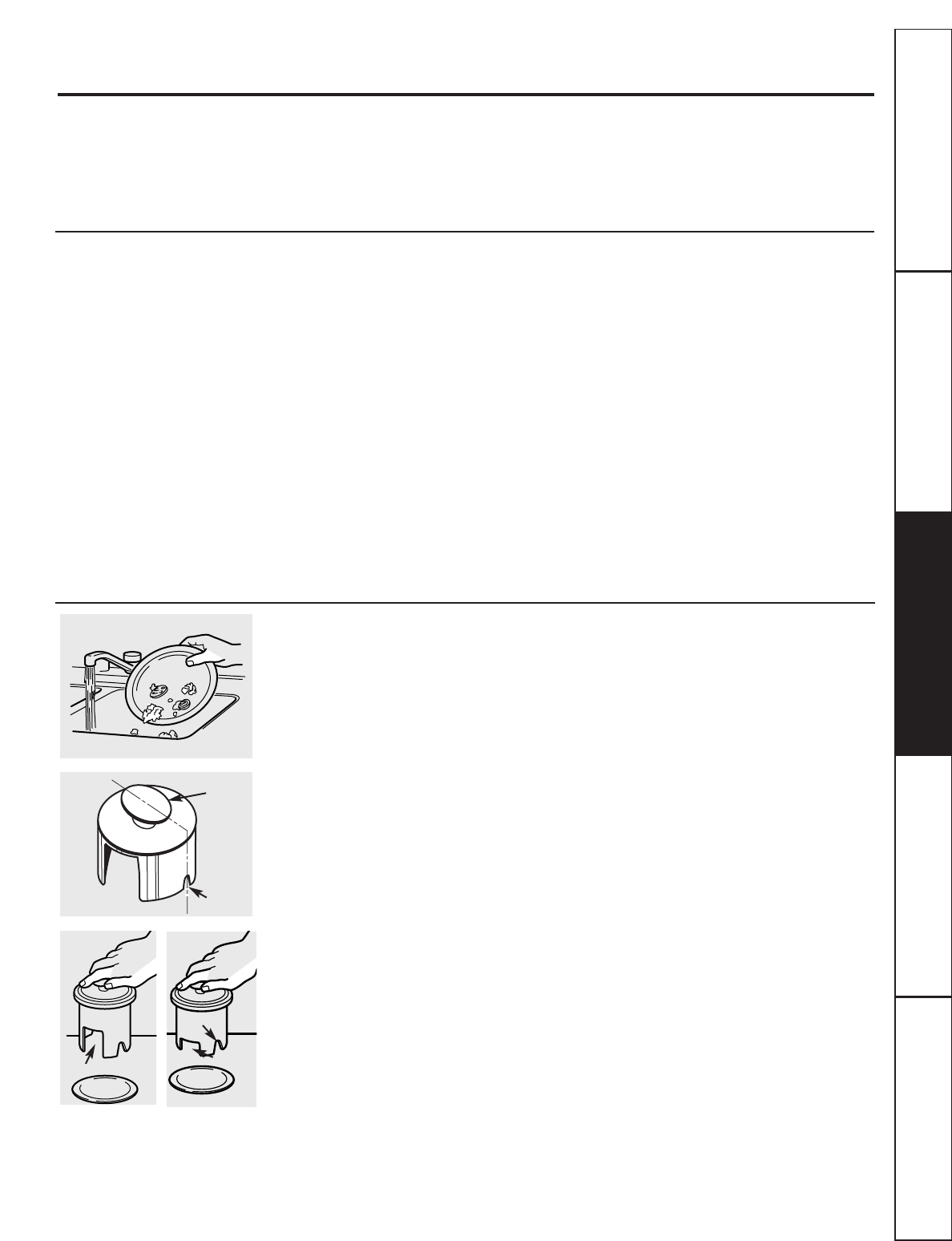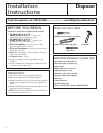
9
Operating instructions. www.GEAppliancesCanada.com
Continuous Feed Models
A. Remove the sink stopper and turn on
a medium flow of cold water.
B. Turn the switch to ON.
C. Scrape in food waste. To speed up food
waste disposal, cut or break up large
bones, rinds and cobs. Large bones and
fibrous husks require considerable
grinding time and are more easily
thrown away with other trash. Do not be
alarmed that the disposer slows down
while grinding. The disposer is actually
increasing torque (grinding power) and
is operating under normal conditions.
D. Before turning the disposer off,
let the water and the disposer run
for approximately 25 seconds after
shredding stops. This assures that all
waste is thoroughly flushed through
the trap and drain.
E. Do not use hot water while running
the disposer. Cold water will keep
food waste and fats solid so they can
be flushed down the drain.
This disposer uses anti-jam swivel impellers that make
a clicking sound as they swing into place. This indicates
normal operation.
Batch Feed Models
A. Remove the sink stopper and turn on
a medium flow of cold water.
B. Scrape in food waste.
C. Insert the stopper to start the disposer.
One of the two small slots in the stopper
base must line up with the switch
plunger inside the neck of the disposer.
NOTE: The oval shaped handle aligns with the
2 small slots in the stopper.
Push down firmly to start.
D. Run the disposer for 25 seconds after
shredding stops. This assures that all
waste is thoroughly flushed through
the trap and drain.
Lift the stopper to shut the disposer off.
E. To fill the sink, insert the stopper so that
the largest slot lines up with the switch
plunger. The stopper can now be
pushed down to seal the sink without
starting the disposer. When the
medium-sized slot in the stopper base is
lined up with the switch plunger, water
can drain, but tableware, etc., cannot be
accidentally dropped into the disposer.
Oval
Handle
Small
Large
Small
Medium
Consumer SupportTroubleshooting TipsInstallation InstructionsSafety Instructions Operating Instructions














